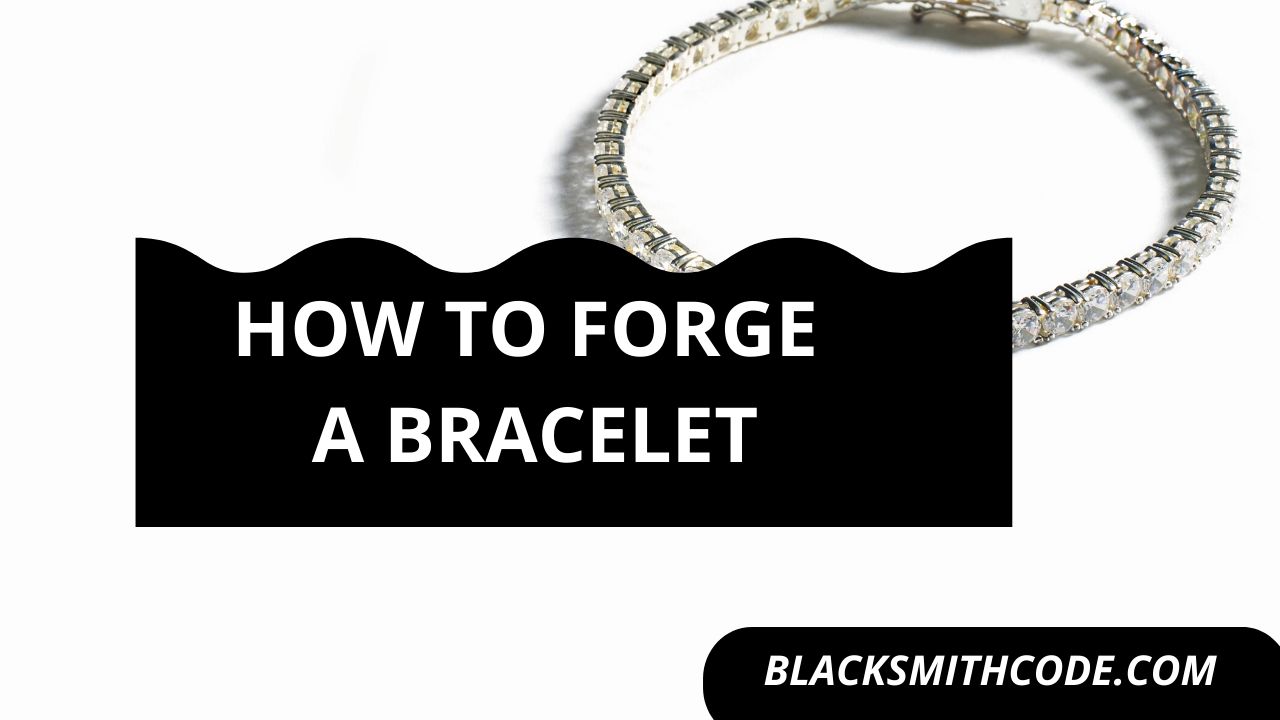Imagine forging the best hand jewelry on your own, sounds great right? Let’s start by learning how to forge a bracelet!
Bracelets are standard accessories in modern times. They are mostly useful for fashion, and you can create them from diverse materials, including copper, steel, and even gold.
Forging bracelets is an excellent asset to blacksmiths. Aside from allowing you to make useful accessories for yourself, it is also a great commercial asset.
However, the process of forging bracelets might vary slightly with the type of materials to use. Nevertheless, it is not enough reason to panic. The steps below will give you a general guide on how to forge the best bracelets.
Essentials
One of the things that make the forging process easy is having all your tools and materials around. It is best if you have all the materials you need at proximity before even starting the process in the first place. Here are some of the essentials that are important for forging bracelets.
Instructions on How to Forge a Bracelet
Step 1: Get Your Materials
It is essential to get your materials available. Most bracelets usually make use of wire materials. If the wire is not straight, consider straightening it to make the rest of the process easier.
Step 2: Twisting
The next step is to twist the wire to start taking the shape of the bracelet you want. Make sure the wire is entirely free of any tangles. You can make the twists by clamping the cable in the jaws of locking pliers.
Twisting only stops when you already have your desired shape or desired amount of twists.
Step 3: Hammering
Now, it is time to make use of a hammer. You need the flat surface of a hammer and a flat surface, maybe an anvil to carry out this process. Continue hammering until you have a uniform width.
Ensure you hammer the wire squarely. If you notice that the bracelet is going out of shape, hammer it back to straighten it.
Step 4: Soldering
It’s time to do some joining. This stage of forging a bracelet is where you cut the bracelet to length and attach a hooking end.
Quick Steps
- Cut the bracelet to length.
- Apply flux paste to the end of the bracelet and the tip of the hooker/nuts.
- Use your solder torch on the joint until you have a perfect strength.
- File off the surplus solder on the surface of the joint.
Step 5: Polish
At this stage, you should give your bracelet an exquisite outlook. This process will make it appealing to the sight. The type of polish and technique may vary with the kind of material you are using.
However, there is still a general method of polishing.
Quick Steps
- Make use of sandpaper to smoothen the face of a bracelet to give a more excellent outlook.
- Choose a suitable polishing compound depending on the type of material you are using.
- Apply the polishing compound with the use of a buffing wheel.
Step 6: Form the Precise Shape
By now, you should already have your bracelet ready most likely in the linear form. Now it’s time to give it a circular shape to form a bracelet ultimately.
Quick Steps
- Get a circular-shaped material to help you form the shape
- Wrap the content around it
- Keep wrapping or curving it until you have your desired shape.
Step 7: Finishing
This finishing aims to fine-tune your work. Use finishing processes that would be suitable for you and one that would fit the type of material you are using. After your finishing process, the bracelet must be ready to move out of your workshop.
FAQs on How to Forge a Bracelet
Question
What materials can I use for making bracelets?
The material for making a bracelet is dependent on the choice of the blacksmith. The material you use for the forging process can influence the overall quality and value. You can make use of any material for your bracelets as long as you can make them into wires.
The common materials for making bracelets include copper, steel, gold, and silver.
Question
How long does it take to forge a bracelet?
Forging a bracelet does not take too much time. It is even faster when you have mastered the skills. It can take a relatively long time for first-timers and inexperienced blacksmiths.
Nevertheless, the entire process of forging a blacksmith should take around 4-6 hours on average. The time frame is, however, subject to some variations depending on some underlying factors.
Question
Can I shower with my copper jewelry?
Definitely! You can go to shower with your copper bracelet. Although the copper will get wet, even warm water will keep the bracelet clean. Also, you can clean the copper bracelet with an alternative method.
You can clean it by applying lemon juice and baking powder on the surface of the copper with a cloth. Once this is done, rinse and dry it with water.
Question
Is stainless steel suitable for forging bracelets?
Yes! Stainless steels are excellent materials for forging bracelets. It is a highly durable material that can stand the test of time. It has the property that allows it to withstand the wear and tear that arises from daily activities.
This material doesn’t easily damage because it resists oxidation, prevents corrosion, and scratches.
Video on How to Forge a Bracelet
Warnings
Safety is an integral part of the forging process. Therefore, you should take some precautions that will guarantee your safety and help you get your desired outcome. Here are some useful precautions to take while forging bracelets.
- Be careful while hammering your bracelet to have an even width.
- Solder carefully.
- Use a suitable torch for your soldering process and avoid overheating the material.
- Don’t neglect your safety and protective gear while forging the bracelets.
References
1. https://www.instructables.com/id/How-to-Make-Cool-Stainless-Steel-Jewellery/
2. https://www.instructables.com/id/Steel-Bracelet/
3. https://www.jewelry-auctioned.com/fr/learn/buying-jewelry/what-is-copper-jewelry
4. https://www.interweave.com/article/jewelry/easy-hammer-metal-forging-twisting-tapering/





